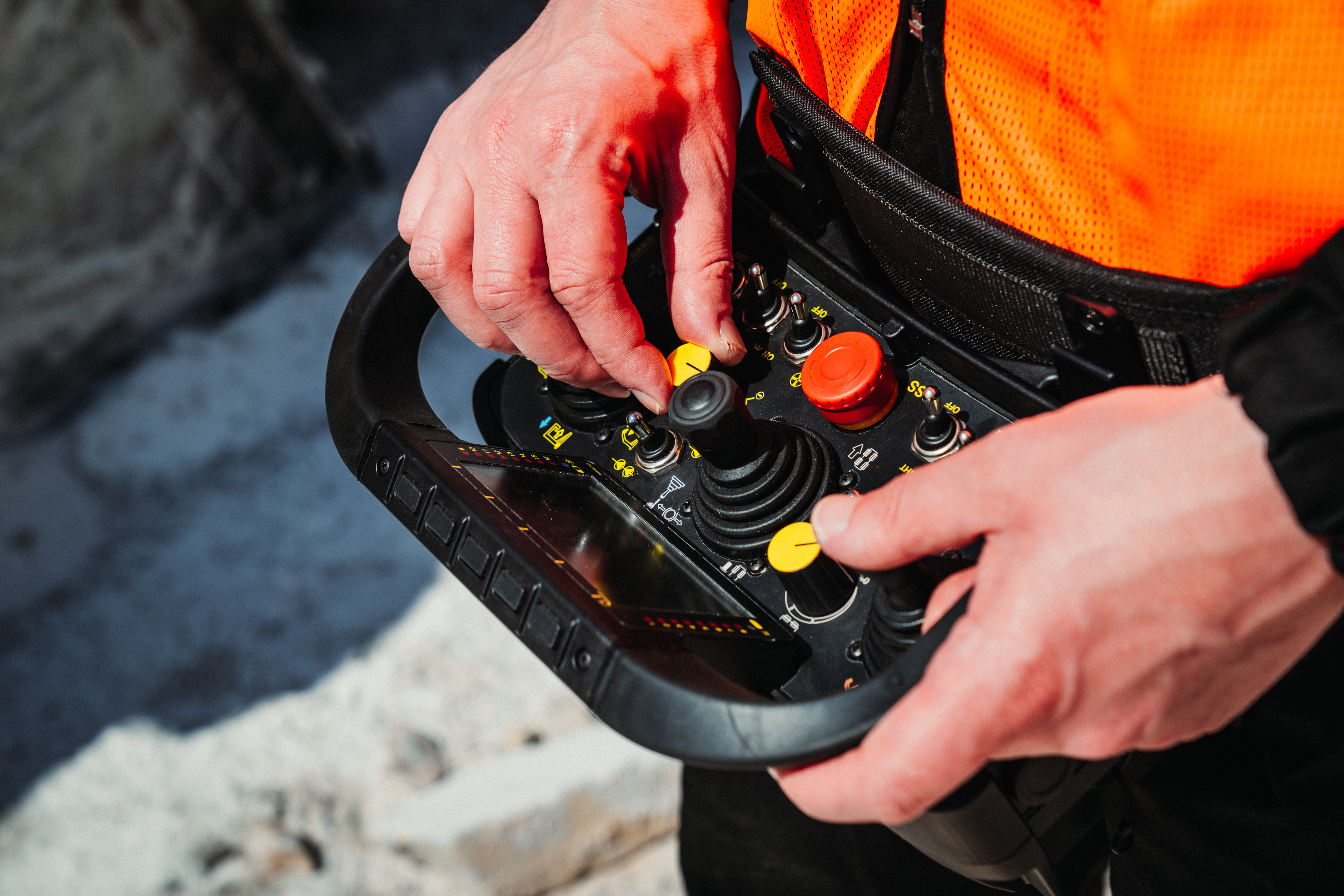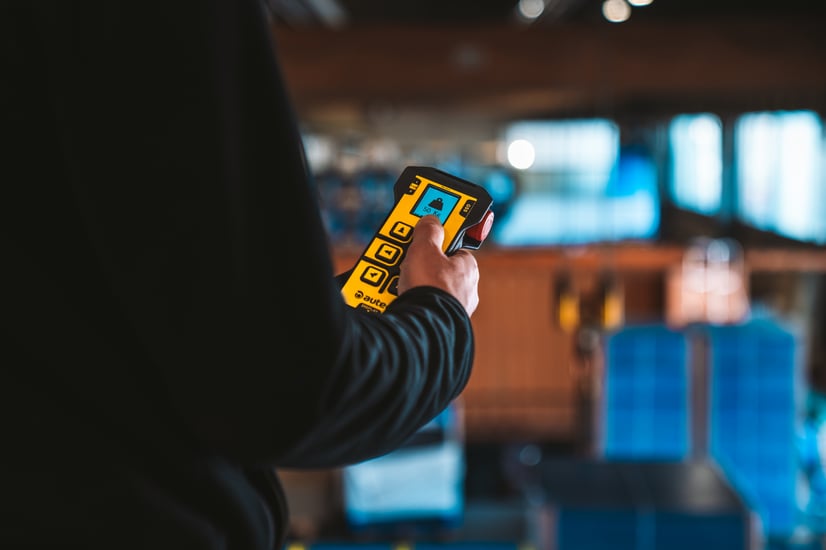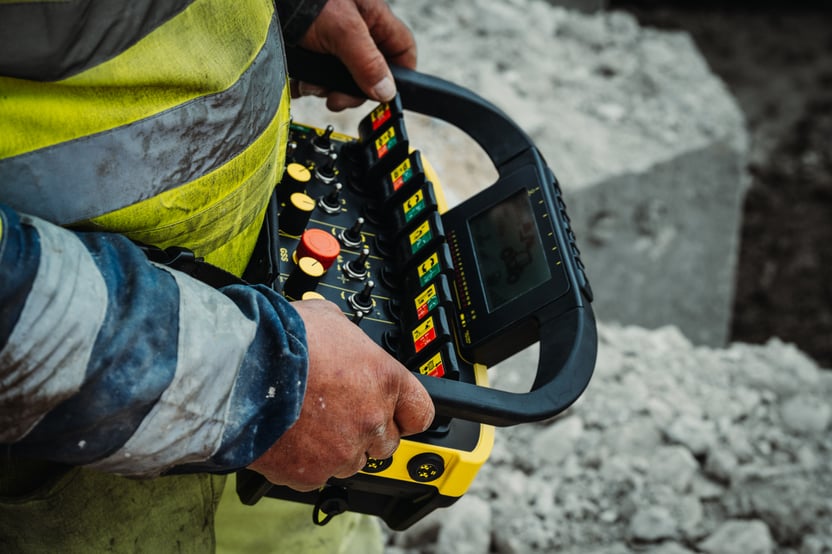Industrial Radio Remote Controls: The Complete Guide

Industrial radio remote controls (Cabless Control System) represent a high-value strategic technological solution for the remote control of machines and systems, whether mobile or stationary. Thanks to radio frequency communication, these devices allow operators to manage various types of machinery remotely, from overhead cranes to drilling rigs, ensuring
Radio remote controls are used across a wide range of industrial sectors: construction and infrastructure, logistics and transportation, automation and industrial lifting, forestry, agriculture, and maritime machinery. However, industrial radio remote controls must be designed in compliance with strict regulatory standards to ensure the safety of the machine, operators, and work environments. Operating in hazardous contexts requires rigorous testing in mechanical, electrical, radio, and environmental domains. That’s why choosing the right remote control requires a careful evaluation of application needs and system characteristics.
This guide is designed to help you understand how industrial radio remote controls work, the benefits they offer, the various models available, and the process for identifying the one best suited to your needs.
Radio Remote Control System
Industrial radio remote controls generally consist of two main components:
- Transmitting unit used by the operator, which can be a pushbutton panel, a joystick model, or other portable formats with vertical grips with digital or analog/proportional controls.
- Receiving unit installed on the machine to be controlled, which activates the machine’s commands via I/O interfaces.
Radio Frequency Communication
Communication between the transmitting unit (portable station) and the receiving unit (base station) occurs via radio waves. The most used frequency bands are 434 MHz, 868 MHz, 915 MHz, and 2.4 GHz, each with specific characteristics in terms of range, obstacle penetration, and immunity to interference. The choice of frequency band depends on the target market and the operational context of the remote control. We’ll explore these in detail later.
To ensure operational reliability in increasingly connected and complex industrial environments, AUTEC remote controls implement advanced technologies such as:
- FHSS (Frequency Hopping Spread Spectrum), where the frequency changes hundreds of times per second, making communication resilient to interference;
- Bidirectional communication to receive feedback from the machine, improving real-time control;
- Secure signal encoding to prevent unauthorized activations or external interference.
Let’s now look at the different types of industrial radio remote controls.
Transmitting Units (Portable Station)
As mentioned earlier, transmitters send signals to the receiver, allowing the operator to move the machine safely and ergonomically. They can be divided into:
- Pushbutton panels: Mainly used in industrial sectors and for material handling. Available in standard or customizable versions, they are ideal for applications ranging from overhead cranes to advanced automation systems. Options that can be integrated include status LEDs, color displays, IR sensors, enabling switches, and safety functions such as Enabling & Stop.

- Joystick model: Known for their versatility and adaptability to any operational context. Compact versions equipped with up to two multi-axis joysticks are ideal for applications such as construction cranes, telescopic handlers, or light self-propelled machines. For more complex needs, larger solutions allow up to five multi-axis and ten single-axis joysticks, perfect for controlling drilling machines, tunnel excavation equipment, or pipeline management. Models may include displays, video streaming cameras, visual and tactile feedback systems (such as signal LEDs and vibration), offering the operator an intuitive, safe, and reliable interface.

Receiving Units (Base Station)
Receiving units vary based on power supply type (AC or DC), the number and type of commands to manage, and the integration or communication methods with the machine. Each receiver can be configured with digital, analog, and fieldbus commands (CANopen, Profinet, etc.), allowing for simple and immediate integration with existing control systems.

*The proportions and dimensions of the receiving units shown in the image are not accurate and have been modified for illustrative purposes.
Click here to explore all models in detail.
Choosing Based on Needs
Each application is unique. Therefore, selecting the most suitable remote control requires a thorough technical analysis supported by a team of experts.
Key characteristics to consider include:
- Transmission frequency
The choice of band (434 MHz, 868 MHz, 915 MHz, or 2.4 GHz), in addition to being market-driven, affects range, penetration, and immunity to interference. The application context influences these aspects. Each scenario presents specific characteristics that affect system performance: enclosed industrial environments, utility work in city centers, tunnel operations, open-field activities, or cableway communications. These examples require different signal coverage and interference tolerance.
Thus, it’s not possible to define universally “optimal” characteristics for range, penetration, and immunity. It’s essential to make specific technical choices and adapt system features to the operational context and machine.
- Functional safety
-
Environmental context
Whether in construction sites, foundries, or port logistics, industrial remote controls are designed to withstand dust, vibrations, chemicals, and electromagnetic interference, ensuring usability and durability over time. Another specific context is high-explosion-risk environments (Ex), which require dedicated and certified devices, AUTEC offers a range of remote controls for these specific applications.
Conclusion
Choosing the right remote control is essential for achieving high performance, long-term durability, and a safe and efficient user experience. If you’re unsure about which remote control and configuration best suit your needs, consult a specialized technical advisor.
Richiedi maggiori informazioni